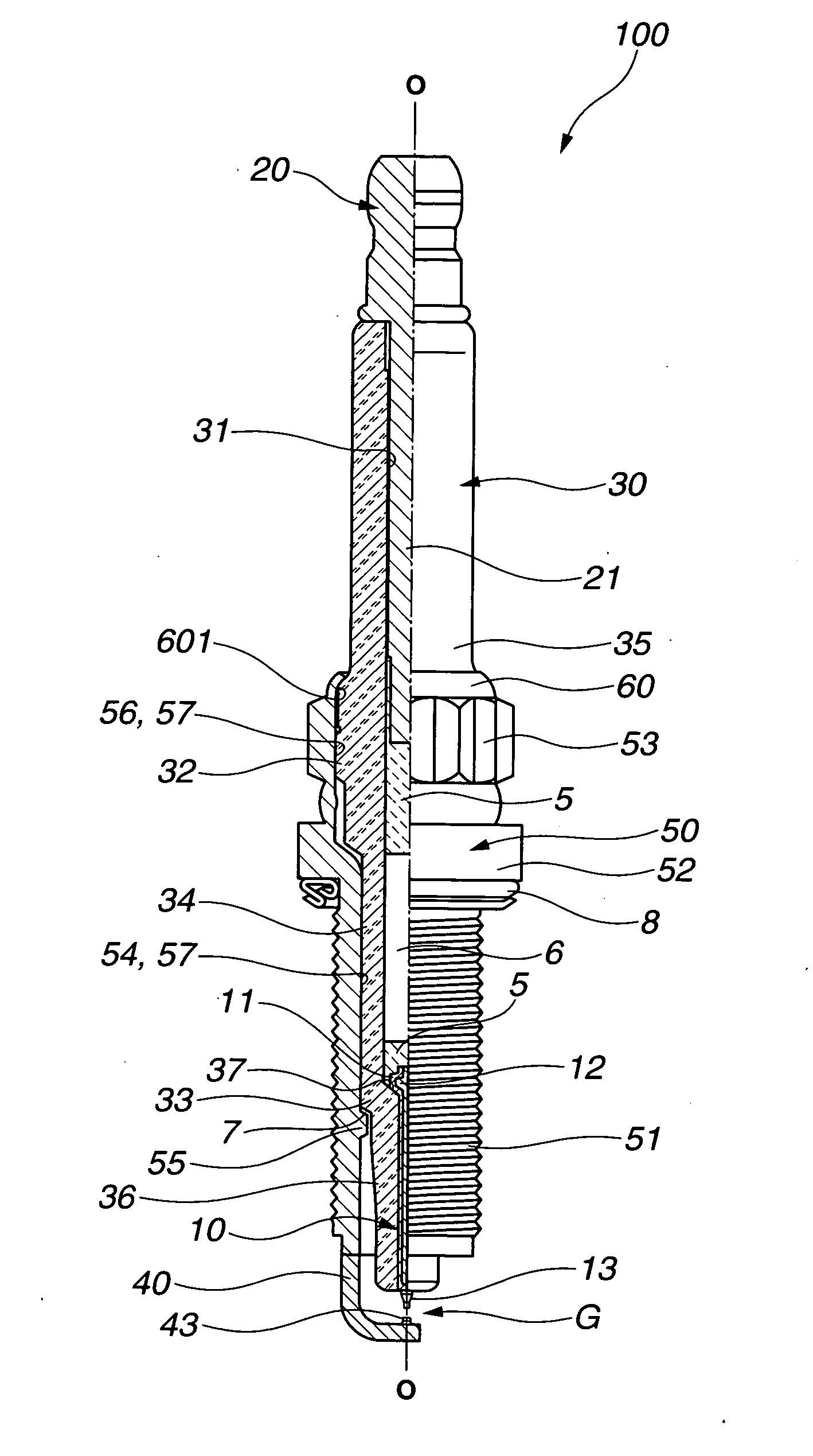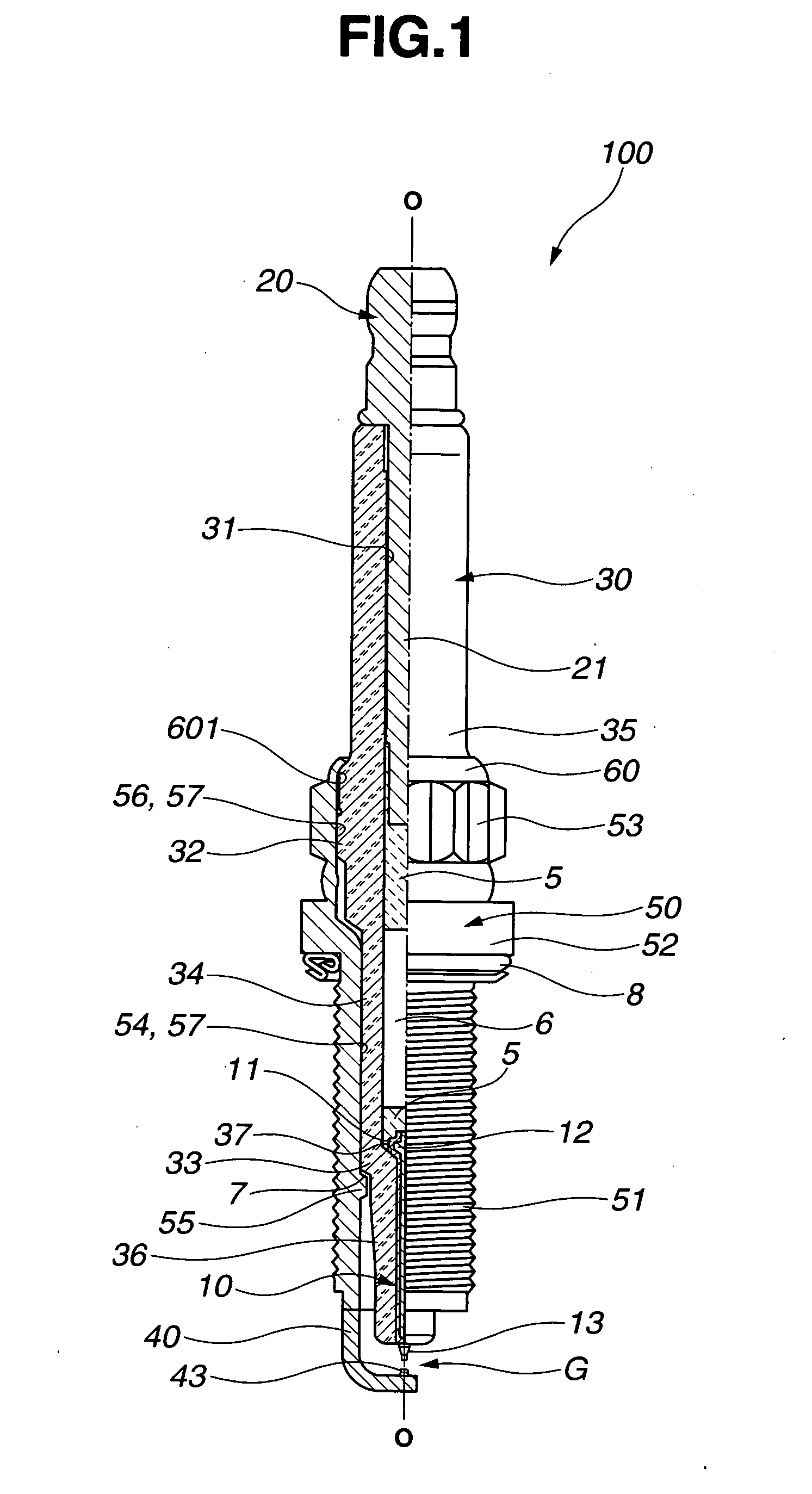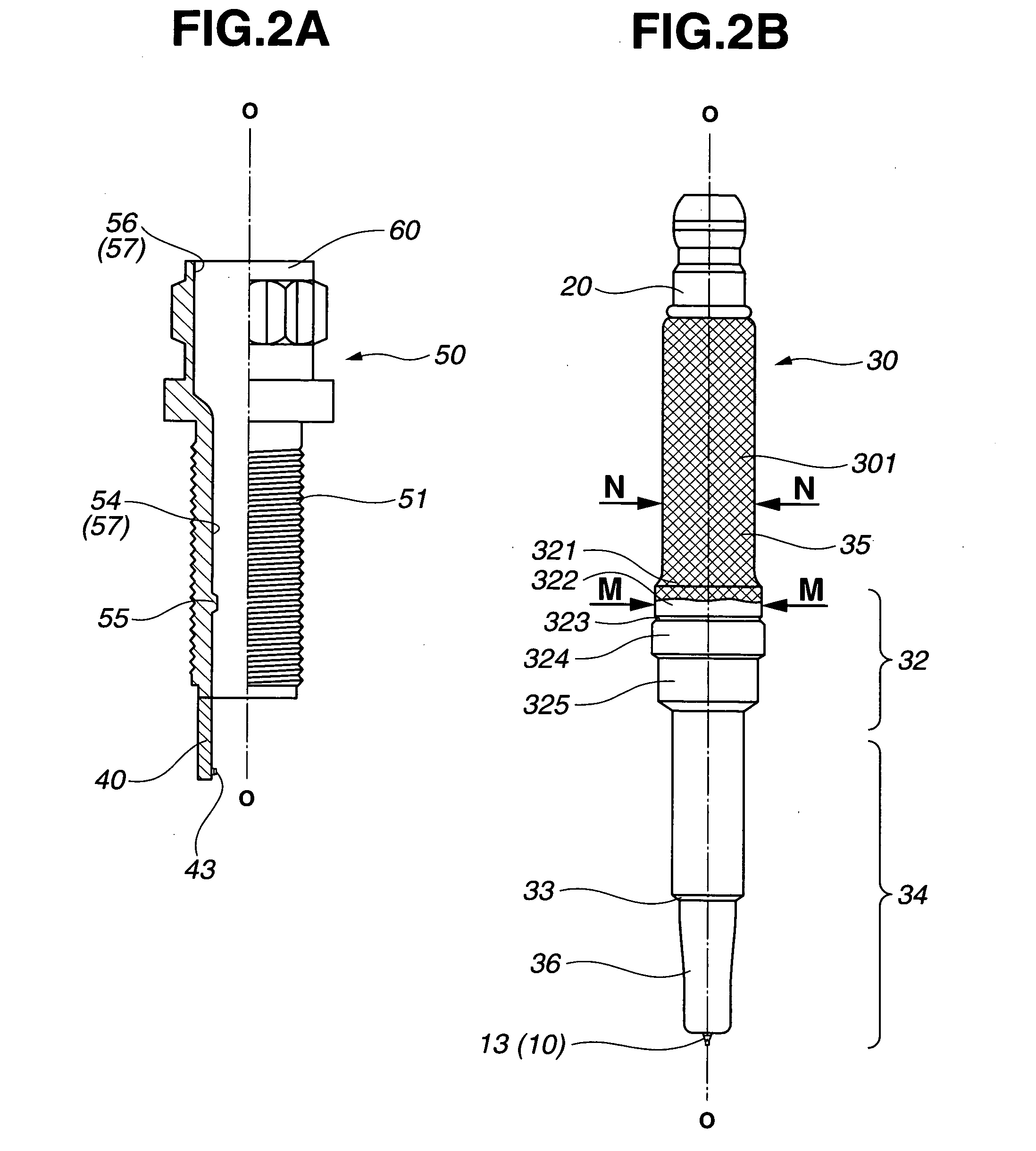Spark plug
- Summary
- Abstract
- Description
- Claims
- Application Information
AI Technical Summary
Benefits of technology
Problems solved by technology
Method used
Image
Examples
experiment 1
[0054] Five types of samples of the spark plug 100 (5 samples for each type, 25 samples in total) were produced in the same way as described above by varying the length of the rear end portion 60 of the metal shell 50 (as measured before the crimping process). The plug components of the samples used were those for general-purpose spark plugs. Further, the crimping process was performed using the same crimping jig through the application of a tightening torque of 25 N·m so as to attain the same bending degree (angle) for all of the samples. The dimensions of the samples are indicated in TABLE 1.
[0055] Each of the samples was tested for the gas tightness between the metal shell 50 and the ceramic insulator 30 as follows. In the test sample, a gas hole was made through the metal shell 50 at a position between the plug attachment portion 52 and the tool engagement portion 53 to communicate with the through-hole 57. A flow of air gas was injected into the test sample from its front side...
experiment 2
[0057] Seven types of samples of the spark plug 100 (5 samples for each type, 35 samples in total) were produced in the same way as in Experiment 1, except that the crimping process was performed using different crimping jigs to vary the shape of the crimped shell portion 60 and the area of the contact region 602 of the crimped shell portion 60 although the rear end portion 60 of the metal shell 50 was set at the same length for all of the test samples. The dimensions of the samples are indicated in TABLE 2.
[0058] The samples were tested for the gas tightness between the metal shell 50 and the ceramic insulator 30 in the same way as in Experiment 1. The test results are indicated in TABLE 2 and FIG. 7. (In FIG. 7, the numbers assigned to the plot points represent the sample types.)
[0059] The samples were also tested for the power of the crimped shell portion 60 to hold the ceramic insulator 30 as follows. The test sample was fixed on a sample stage by screwing the threads 51 into ...
experiment 3
[0061] Seven types of samples of the spark plug 100 (5 samples for each type, 35 samples in total) were produced in the same way as in Experiment 2. The dimensions of the test samples are indicated in TABLE 3.
[0062] The samples were subjected to Charpy test as follows according to JIS B7722 in order to evaluate the resistance of the ceramic insulator 3 to breaking. The test sample was fixed on a sample stage by screwing the threads into a threaded vertical through-hole of the sample stage with a front end of the spark plug directed downward. A hammer was fastened pivotally about a point above the spark plug 100 on the spark plug axis O. A head of the hammer was lifted to some height, and then, released to fall freely to collide with a part of the ceramic insulator 30 located at a distance of about 1 mm from the insulator rear end. The above test procedure was repeated by gradually increasing the hammer head lifting angle by given degrees. The breaking energy of the ceramic insulato...
PUM
| Property | Measurement | Unit |
|---|---|---|
| Length | aaaaa | aaaaa |
| Fraction | aaaaa | aaaaa |
| Angle | aaaaa | aaaaa |
Abstract
Description
Claims
Application Information
 Login to View More
Login to View More - R&D
- Intellectual Property
- Life Sciences
- Materials
- Tech Scout
- Unparalleled Data Quality
- Higher Quality Content
- 60% Fewer Hallucinations
Browse by: Latest US Patents, China's latest patents, Technical Efficacy Thesaurus, Application Domain, Technology Topic, Popular Technical Reports.
© 2025 PatSnap. All rights reserved.Legal|Privacy policy|Modern Slavery Act Transparency Statement|Sitemap|About US| Contact US: help@patsnap.com



